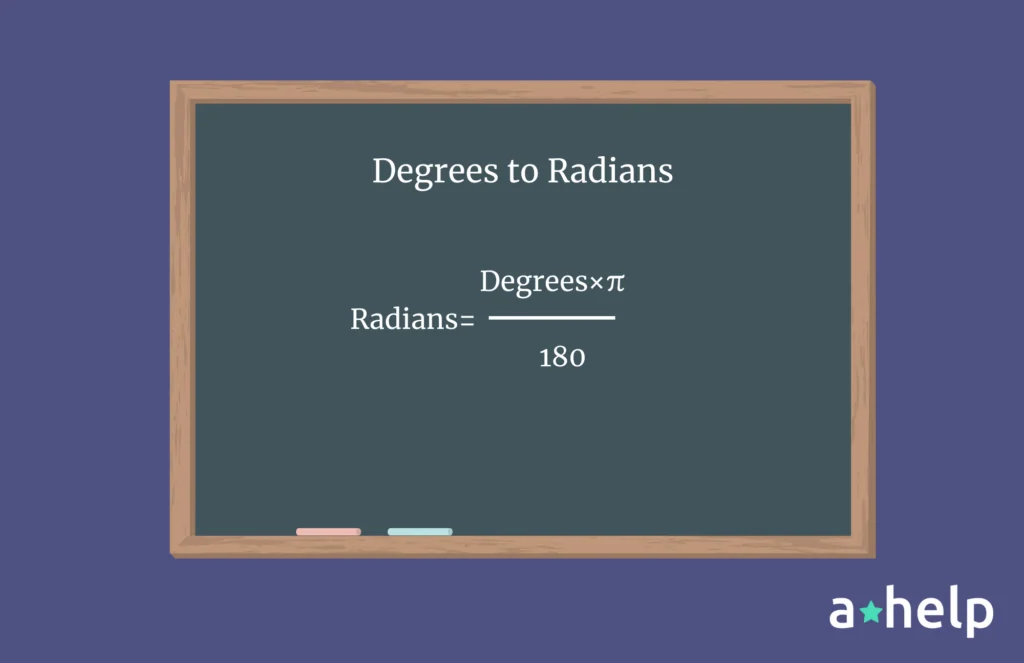Understanding the conversion from degrees to radians is crucial in geometry and trigonometry. Radians are often used in more advanced mathematical calculations and programming. This guide will walk you through the process of converting degrees to radians, providing a clear and concise explanation along with practical examples.
Definition of Degrees and Radians
Before delving into the conversion, let’s define what degrees and radians are. Degrees are a common unit of measuring angles, with a full circle being 360°. Radians, on the other hand, measure angles using the radius of a circle. A complete circle is represented by 2π radians.
| Degrees | Radians | |
| Representation | Degrees are denoted by the symbol ° and are commonly used in everyday measurements of angles. A full circle is divided into 360 degrees, representing a complete revolution. | Radians are denoted by the symbol “rad” and are based on the radius of a circle. One radian is defined as the angle subtended when you traverse an arc length equal to the radius. |
| Visual Representation | Visualize a circle, and you can imagine it being divided into 360 equal parts, each corresponding to one degree. | Imagine a circle with a radius of one unit. If you travel along the circumference for a distance equal to the radius, the angle subtended at the center is one radian. |
| Practical Use | Degrees are often used in everyday situations, such as navigating with a compass, specifying temperatures on a thermostat, or describing directions. | |
| Relation to Circumference | Since the circumference of a circle is 2π times its radius, a full circle (360°) is equivalent to 2π radians. | |
| Mathematical Significance | Radians are particularly useful in mathematical calculations, especially in calculus and trigonometry. They simplify many formulas and theorems, making them more elegant and applicable. |
Understanding the relationship between degrees and radians is crucial for effective conversion. One complete revolution around a circle, measured in degrees, is equal to 360° or 2π radians. This fundamental connection forms the basis for converting between these two angular units.
Degrees to Radians Formula
The formula for converting degrees to radians is straightforward:

Here, π (pi) is a mathematical constant approximately equal to 3.14. This formula allows us to convert any angle measured in degrees to its equivalent in radians.
Conversion Steps
Let’s break down the conversion process into simple steps:
Step 1: Write down the numerical value of the angle given in degrees.
Step 2: Multiply the numerical value from Step 1 by π/180.
Step 3: Simplify the expression by canceling any common factors.
Step 4: The result obtained after simplification is the angle measure in radians.
Degrees to Radians Chart
For quick reference, here’s a chart showcasing some common angles in both degrees and radians:
| Angle in Degrees | Angle in Radians |
|---|---|
| 0° | 0 |
| 30° | π/6 |
| 45° | π/4 |
| 60° | π/3 |
| 90° | π/2 |
Conclusion
Converting degrees to radians is a fundamental skill in mathematics. By following the steps outlined in this guide, you can confidently perform this conversion for various angles. Remember to practice with different examples to reinforce your understanding. As you delve further into mathematical concepts, the ability to convert between degrees and radians will prove invaluable.
FAQ
Follow us on Reddit for more insights and updates.





Comments (0)
Welcome to A*Help comments!
We’re all about debate and discussion at A*Help.
We value the diverse opinions of users, so you may find points of view that you don’t agree with. And that’s cool. However, there are certain things we’re not OK with: attempts to manipulate our data in any way, for example, or the posting of discriminative, offensive, hateful, or disparaging material.